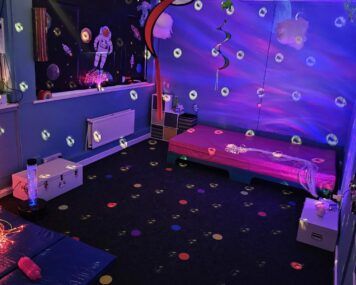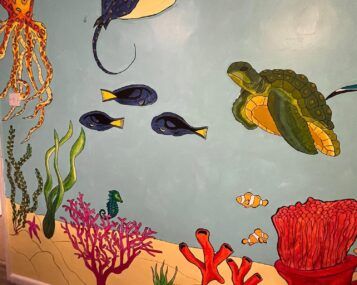The secrets of a successful sensory room

Hannah Molloy, autism peer mentor and consultant

“Being autistic has presented me with burnout and overwhelming feelings at times. I try to use different coping strategies such as mindfulness, getting out into nature and talking with my family, but one thing that’s helped me on my autism journey is sensory rooms.
Sensory rooms provide escapism and take your mind off everyday worries. Being in a sensory room focuses my mind. Others have told me it helps keep their sensory sensitivities balanced.
You can visit sensory rooms locally or build your own sensory space in your house. Some things you could include are: a galaxy light or fibre optic lights; different scents that you find comforting; items with deep pressure like weighted blankets; tactile tools on the wall and a sensory tent or swing.
Top tip: Make sure the sensory room is individualised to the person!”
Lisa Lazell, Area Manager for Durham, Darlington and Gateshead

Lots of services for people with disabilities and autism closed down after Covid. There weren’t any affordable sensory room experiences in the area so we transformed parts of our area office into a space which would allow us to offer community day support.
Our sensory room includes: a waterbed; frames backed with Velcro so you can pull them off the wall; different things you can touch like pipe cleaners and crinkly materials; rope lights; light projectors; a foot massager and concave mirrors.
We’ve included lots of things hanging from the ceiling too, so if somebody has profound or multiple learning disabilities they can still interact with the room. We’ve got sparkly jellyfish with lights, big fluffy clouds and 3D canvases including a seaside scene which is interactive with touch. We also plan to alter the experience to include seasonal changes.
We want the room to be really well used and an asset to our community. A gentleman who we support tested the room recently. It’s not the sort of experience he’d usually attend, but he said ‘I love it’! We’ve got a mobile hoist, a large changing facility and shower bed for people with physical disabilities. People can also bring their own slings.
I think for people who are on the autism spectrum, or those who have sensory needs, it’s really important that there’s a safe and comforting space for them to explore those needs. Sensory rooms can help stimulate underactive senses, as well as providing a calming environment from the overstimulation of the outside world.
Our Darlington sensory room is available for people to book at: URchilledbookings@unitedresponse.org.uk
Eva Benvenuto, Service Manager, Cornwall

Our team became concerned about Simon’s decreasing mobility so we were looking for ways to make him more comfortable and relaxed whilst at home. We met with the local learning disability team who have worked with Simon for a long time, and they mentioned he used to love the sensory room that his housemate had at his old house.
Simon uses non-verbal communication methods and staff understand his likes and dislikes. He’s very clear – he keeps his gaze on things he likes and pushes things away if he doesn’t like them.
Support Worker Amy Watson worked with Simon to choose a theme for the room, finding pictures on the internet and seeing his reactions. When he decided on a sea theme, Amy started painting the pictures on the wall.
The room is still a work-in-progress, but Simon really likes the lights and is spending more time relaxing in the lounge. We see him gazing around at different parts of the room.
Visitors to the house including Simon’s family have complimented the work. Simon’s housemate likes it so much that she’s commissioned Amy to paint her room too!